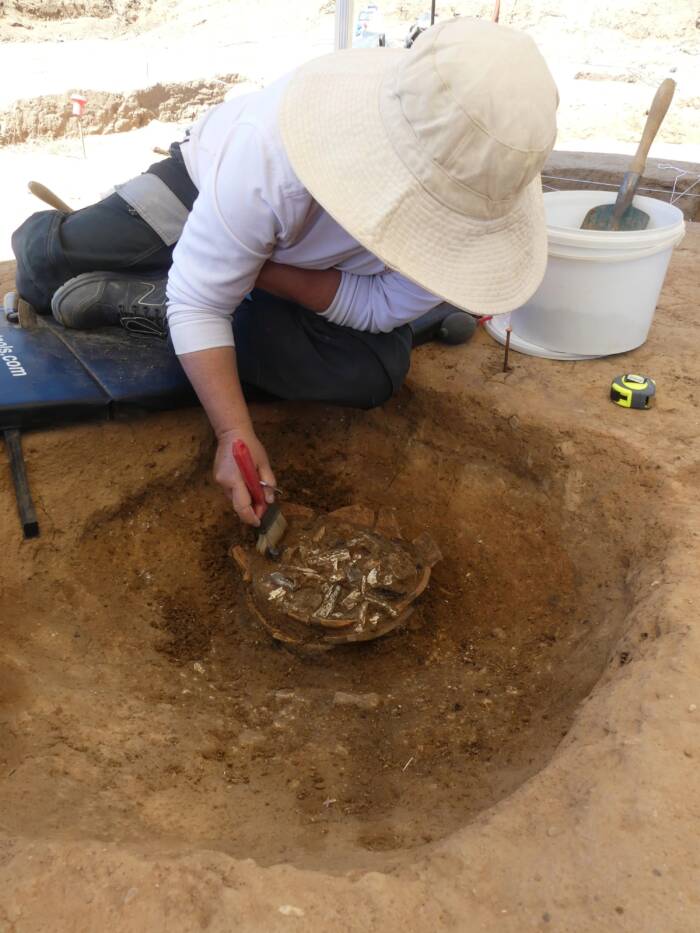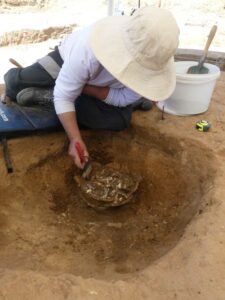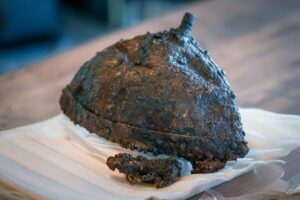Ancient Sweetness Preserved: 2,500-Year-Old Honey Discovered Still Edible in Greek Jars Unearthed in Italy
So, here’s a sticky little mystery that’s been buzzing around since 1954: deep beneath the ruins of an ancient Greek shrine in southern Italy’s Paestum, archaeologists stumbled upon bronze jars packed with a gooey, orange-brown substance. What was it? For decades, nobody could pin it down—was it some weird animal fat, or maybe spoiled nectar? Nope. Fast forward 70+ years and thanks to some fancy new scientific wizardry, we now know this ancient resin is none other than honey. Yup, good ol’ bee magic preserved for 2,500 years, tucked away as an offering to gods or perhaps a sweet gift for the departed. If you ever wondered what immortality tastes like… maybe it’s a drizzle of this golden delight from the past. Curious to see how the ancient Greeks sweetened their rituals? Dive in and get the full scoop! LEARN MORE
Archaeologists discovered the jars inside an underground shrine found at the ancient ruins of Paestum in southern Italy.
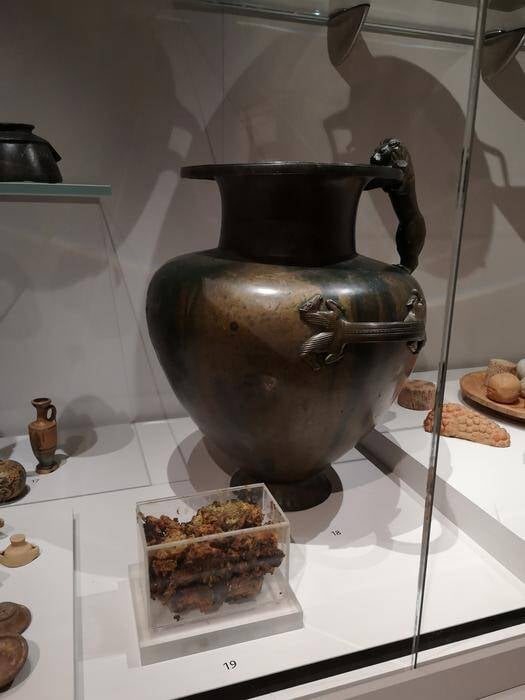
Journal of the American Chemical Society 2025One of the bronze Greek jars discovered at Paestum, pictured alongside the substance that was found inside of it, now known to be honey.
In 1954, archaeologists working in southern Italy uncovered a number of bronze jars left at an ancient Greek shrine. The jars were filled with a sticky orange substance, though researchers were initially unable to identify what it was. But now, more than 70 years later, scientists have determined that the substance in the jars was honey.
An important substance in antiquity, honey was often used as an offering to the gods or left to honor the dead. In the sixth century B.C.E., someone seems to have left jars full of honey at this Greek shrine, which has now given researchers a unique look at ritual practices in the ancient world.
The Discovery Of 2,500-Year-Old Honey In The Greek Jars Found At Paestum
According to a statement from Oxford University, the jars of ancient honey were first found in 1954 by archaeologists excavating the site of Paestum, about fifty miles away from Pompeii. As the archaeologists unearthed a Greek shrine from the sixth century B.C.E., they came across several Greek bronze hydrias, or vessels with three handles. Upon close examination, they found that the jars were filled with a sticky, orange-brown substance.
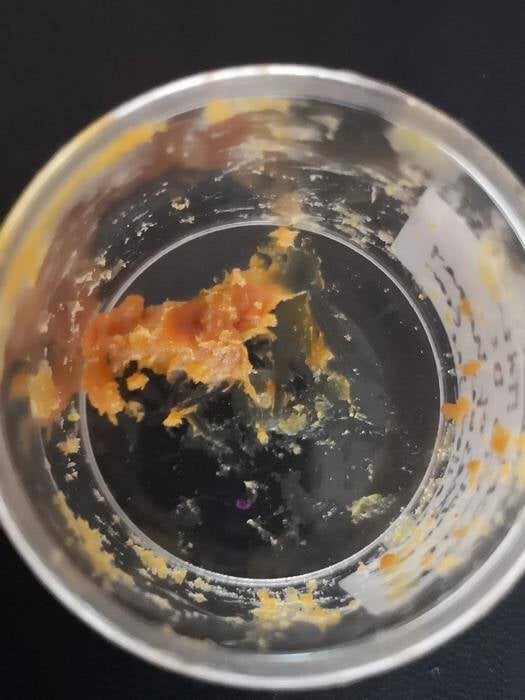
Luciana da Costa CarvalhoSome of the honey that archaeologists discovered in the bronze jars found at Paestum.
Though the archaeologists suspected that the substance was honey, they were unable to confirm it. Three different teams examined the substance over a 30-year period, and none of them were able to definitively identify the substance in the jars. Finally, researchers posited that the substance was “animal or vegetable fat contaminated with pollen and insect parts.”
But a new study, published in the Journal of the American Chemical Society, took a closer look at the substance. Using modern techniques, including mass spectrometry for proteins and small molecule compositional analysis, the researchers were able to glean new details about the substance. Ultimately, they were able to determine that it had “a near-identical chemical fingerprint to modern beeswax and similar to modern honey.”
In other words, the hunch of the original researchers was correct. The substance left at the sixth-century B.C.E. shrine was indeed honey. This makes perfect sense, as honey played a significant part in various customs throughout the ancient world.
The Important Role Of Honey In The Ancient Greek World
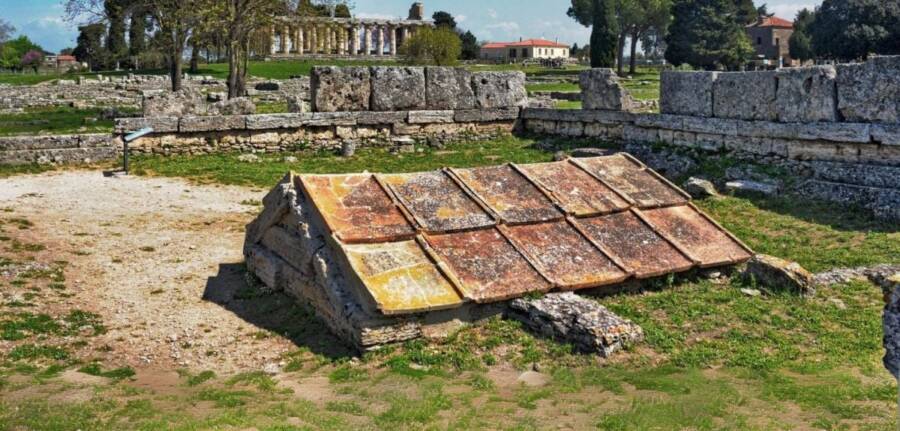
Journal of the American Chemical Society 2025The Greek shrine from the sixth century B.C.E. where archaeologists found the jars of honey in 1954.
As the researchers noted in their study, honey was an important substance in antiquity. It was used to sweeten medicines, for rituals, and even for cosmetics. For the ancient Greeks and ancient Romans, both honey and bees were important religious symbols, as honey was believed to be the source of wisdom and poetry. Greek myths even suggest that Zeus was fed honey as a child, that Aphrodite used honey and beeswax as beauty masks, and that the gods of Olympus lived on honey and honey wine.
What’s more, honey also played an important role in Greek society. Doctors used honey to treat their patients’ diseases and ailments, and during the Olympic games in ancient Greece, athletes drank honey water.
It was also left as an offering for the gods, or as gifts for the dead. That’s what researchers believe happened at the shrine in Paestum.
According to the original excavation report, the sacred nature of the shrine was clear from its difficulty of access and empty bed, which was meant to signify the presence of a deity. The archaeologists in 1954 postulated that the jars contained honey because it was a “symbol of immortality,” and they believed that it had originally been offered in the form of honeycomb, which became beeswax.
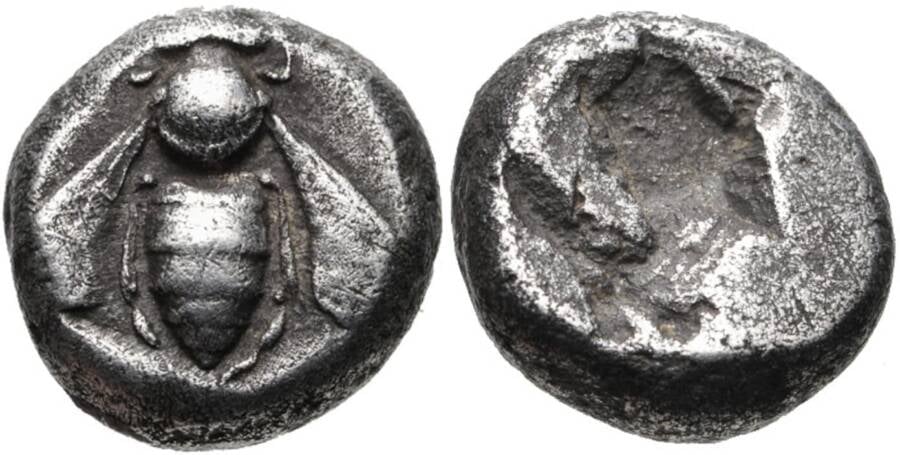
CNG/Wikimedia CommonsAncient Greek coins stamped with the image of a bee. Bees and honey played an important symbolic role in antiquity and were connected to the realms of religion, medicine, and sports.
Now, almost 75 years later, their original guess about the identity of the substance in the jars was proven right.






